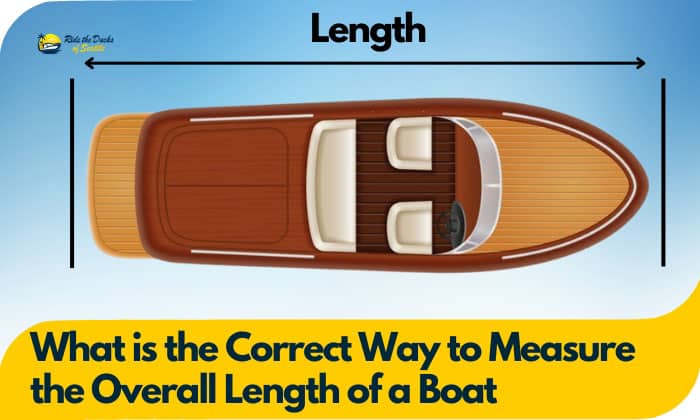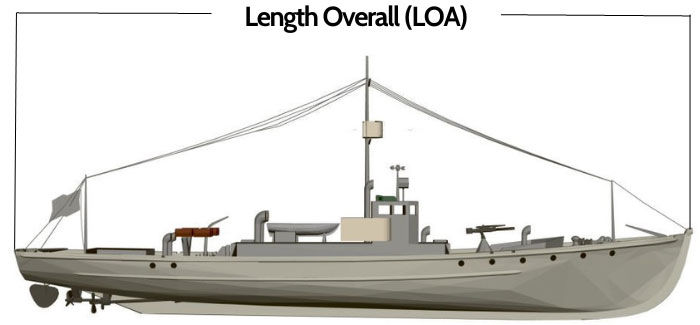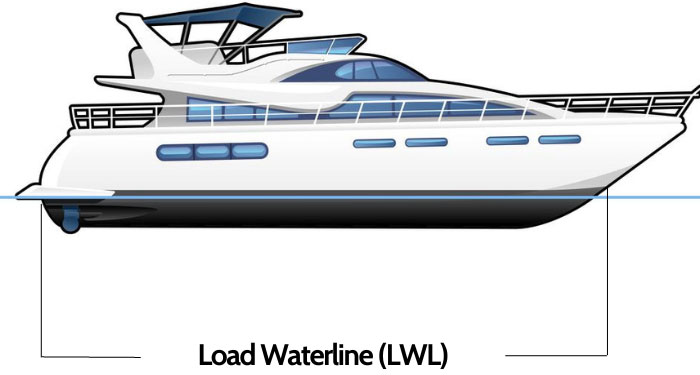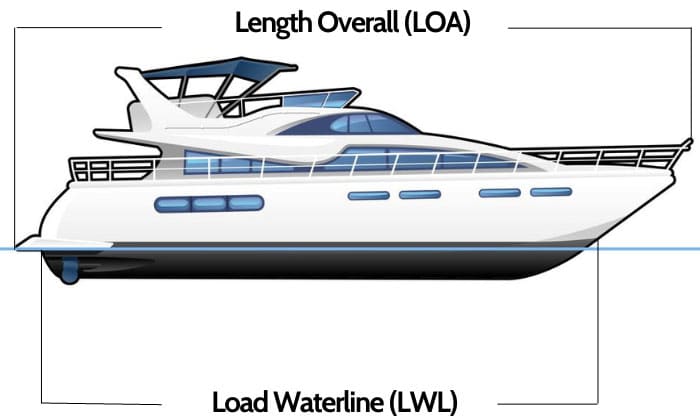What is the correct way to measure the overall length of a boat? It’s actually quite a walk in the park. You only need to measure from the tip of the bow all the way to the stern in a straight line.
But there’s more to it. What about the bowsprits or rudders? Do you count them in?
In today’s article, we will show you accurate methods to measure the overall length of a vessel. Stay tuned!
Table of Contents
Correct Methods for Measuring Overall Boat Length
You can get different measurements of the boat length regarding what you need to know. To be more specific, we have LOA (Length Overall) and LWL (Load Waterline).
1. Length Overall
To measure the length of a boat (LOA), you’d want to keep the measuring tape in a straight line, then go from the tip of the bow to the stern.
It can be tempting to go along the hull, but the result will be somewhat imprecise. Again, you must ensure that the tape is kept straight and not skewed during the measuring process for the most accurate measurement.
Steps for measuring a boat using LOA:
- Gather the appropriate measuring equipment depending on the size of the boats.
- Measuring starts from the bow’s tip and ends at the stern’s furthest point while keeping the tape straight.
- Avoid measuring along the curve of the hull or around any protrusions, exclude appendages, as this can lead to an inaccurate measurement.
Besides, this method also applies to vessels with outboard engines. However, the outer part should not be included in the measurement; see the image below for a better reference.
With this method, you can easily measure the LOA of small vessels, but larger ships may require special equipment.
2. Load Waterline
The Load Waterline (LWL) is the length that sits on the water, typically measured at a default load condition.
Boat measurements explained:
- To measure the LWL of a vessel, you need to keep the tape in a straight line down the centerline for an accurate calculation, then measure from the bow to the stern, but leave out the part that doesn’t submerge in the water.
- The tip is to use a marker and mark down every foot when the vessel is docked, and then measure the overall length when it’s put back on the trailer.
- Other boatmen also recommend measuring the impurity marks that sit near the bottom of the hull if your boat sits on dirty water, but this situation may not always occur so you might stick to pen marks.
Importance of Accurate Boat Length Measurement
Knowing the accurate length of the overall ship is essential due to many reasons.
- When you register for your vessel, the width and length are needed to legalize owning it.
- Additionally, some safety equipment is required to be present when vessels reach a certain size; to know which unit is needed, you ought to measure the width of a boat as well as its length.
- Needless to say, larger vessels would cost more than smaller ones. Thus, the overall length of your vessel, along with other dimensions of a boat, helps with buying the right insurance.
- When people buy equipment or machinery for their vessel, like a trailer, a boat cover, or anchor chains, knowing the length of their vessel would come in handy.
- Finally, larger boats are charged more at a docking site, and there isn’t always enough space to dock. With the boat dimensions explained, you know it’s vital to remember these measurements in mind to ensure your boat fits nicely without damaging other boats.
Conclusion
By now, you should know what is the correct way to measure the overall length of a boat. Keep in mind that the correct measure of a boat is vital for legal compliance, safety, insurance, equipment purchases, and docking experiences.
Take the time to familiarize yourself with these measurements since they will undoubtedly come in handy throughout your boating journey, allowing you to make informed decisions and ensure compatibility with your vessel.

Ten years of enjoying countless trips on boats never made me love them any less! So I am here to put all those experiences into good use for other boaters who want to have a safe and fun trip with their friends and families.




